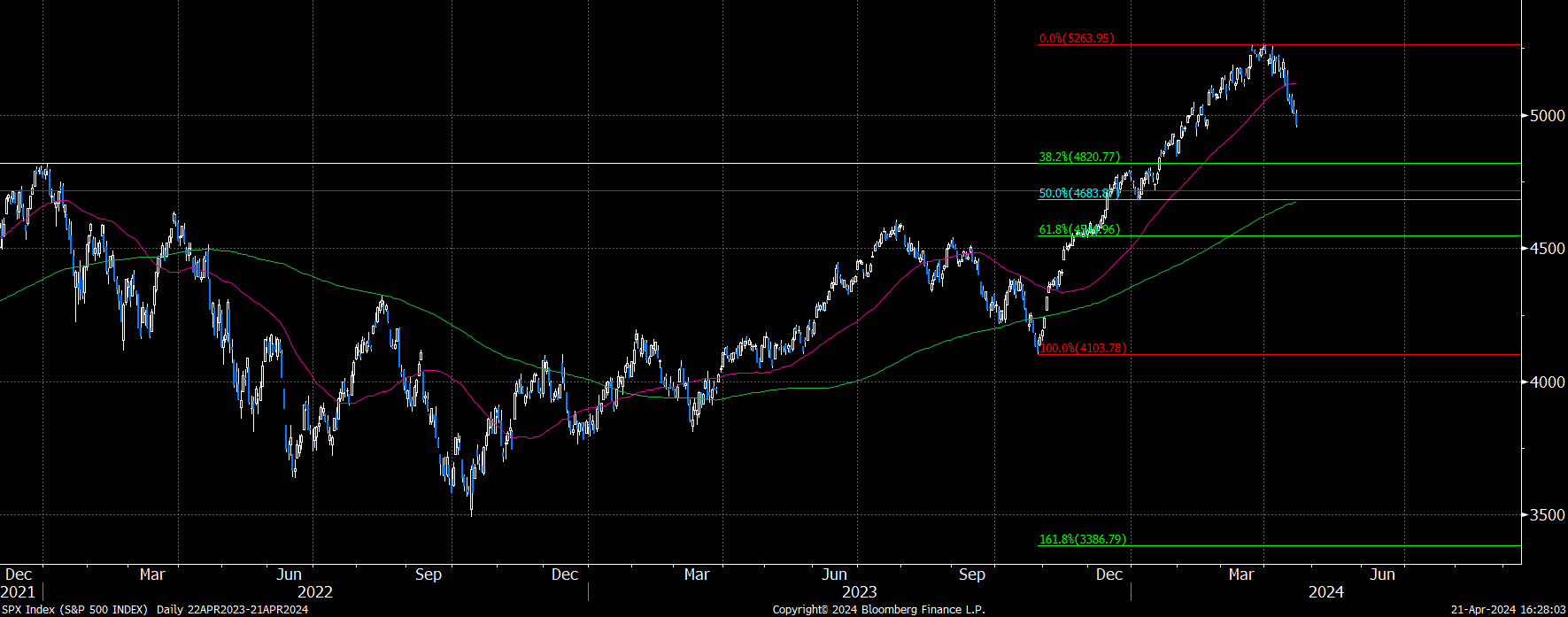Apr 22, 2024
Berman: Where does market correction end?
By Larry Berman
It has been a long time since we have seen red, but don’t panic: market strategist
Firstly, no one knows with clarity or consistency where market tops and bottoms happen. You should run from those who claim to know this; they are charlatans. The business of forecasting markets is rife with uncertainty.
With that in mind, purely looking at the charts, there is a tier of support in the 4,800 area on the S&P 500 Index that is a clear target for the bears to test. A market stops going down when demand overwhelms supply and we have zero evidence of this just yet.
Previous highs can often act as support for corrections – the 2021 high is about 4,820. During correction phases, key support is often found as a percentage of the previous rally – the 38.2 per cent Fibonacci support is also at 4,820. Fibonacci was a twelfth-century mathematician whose calculations seem to have a correlation with investor behaviour.
Trend lines or moving averages historically offer triggers for investors to join a trend – the rising 200-day average will likely be in the 4,800 area by the end of May. So projecting out a few weeks into earnings season, there are at least a few levels where demand could increase.

Markets always need a catalyst. This week, we see the first wave of tech earnings from Microsoft, Meta, Intel and Alphabet (and Tesla, but I do not consider it a tech company). If we look at what is driving earnings, the Magnificent 7 (and now closer to a Magnificent 4), is responsible for all of the earnings growth (2.4 per cent) this quarter, where the rest of the 493 are expected to see earnings contract about four per cent.
This combined with the modest oversold condition and lack of important economic data to move markets could see a bit of a bounce.
Next week, in addition to more big tech earnings, we have the Quarterly Refunding Announcement (QRA) and the Federal Open Market Committee (FOMC) meeting. The cost of capital is a major factor when we consider what the discounted cash flow in earnings should be.
For most companies, debt load is a major part of what drives the bottom line. Many of the big tech names do not carry much debt at all. The massive fiscal deficits and reduction of the FOMC balance sheet are putting a significant supply of bonds on investors' risk appetite.
Those new dollars needed to finance the debt must come from somewhere. So in addition to rising geopolitical headwinds, rising rates are impacting markets and the FOMC tells us that higher for longer is still the main playbook.
If the 4,800 level does not hold after next week’s events (QRA, FOMC, earnings), the next support areas are likely in the 4,500 range. The market started the year at 4,770, which also backs the 4,800 area as a zone of support.
Follow Larry
YouTube: LarryBermanOfficial
Twitter: @LarryBermanETF
LinkedIn: LarryBerman
www.etfcm.com
www.qwealth.com








